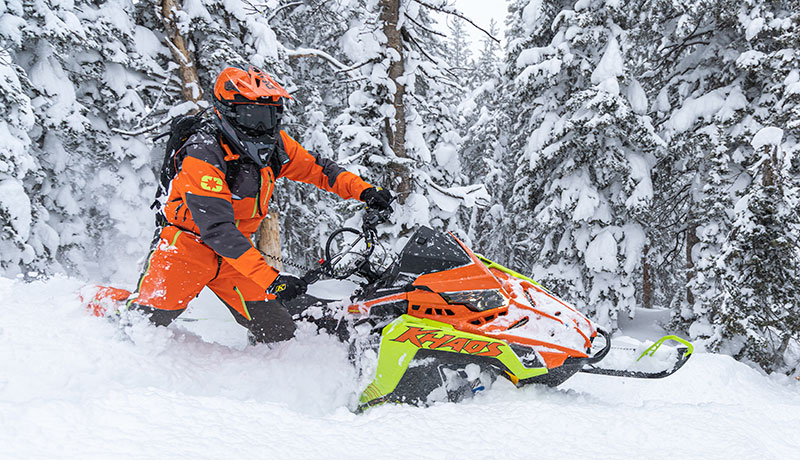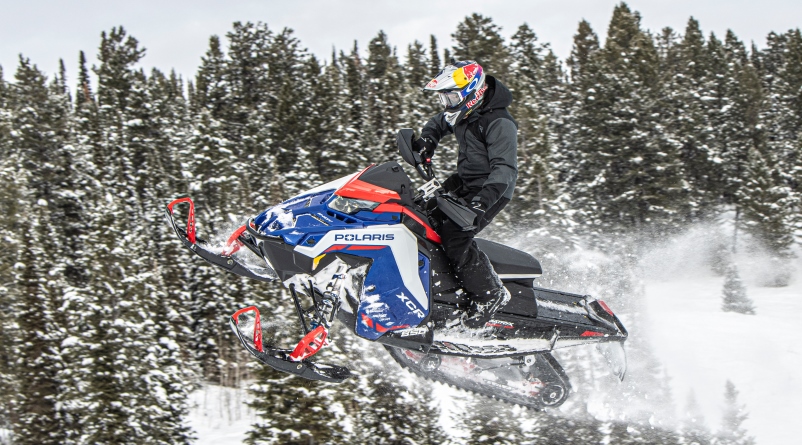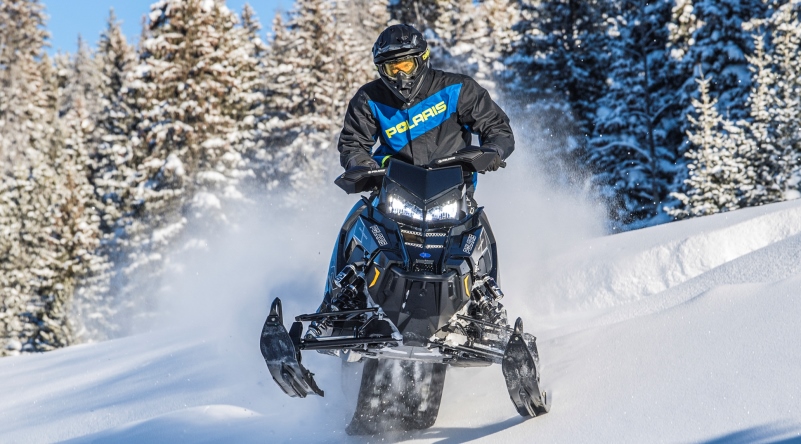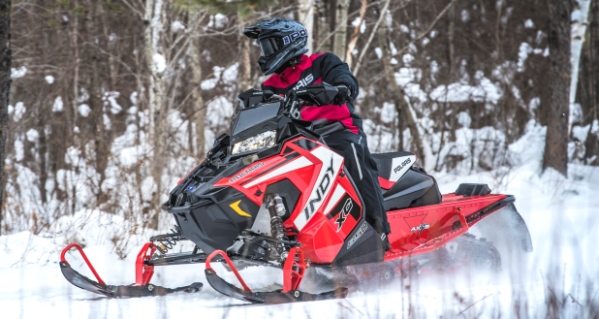 If you ask us, retro snowmobile styling has been cool for at least seven years. Optional black-and-green Arctic Cat “Z” graphics were available on Firecat models in 2005, Yamaha had a classy 40th Anniversary package in 2008 and Ski-Doo brought back the Blizzard and TNT name around the same time frame.
If you ask us, retro snowmobile styling has been cool for at least seven years. Optional black-and-green Arctic Cat “Z” graphics were available on Firecat models in 2005, Yamaha had a classy 40th Anniversary package in 2008 and Ski-Doo brought back the Blizzard and TNT name around the same time frame.
Polaris has recently dabbled with its vinyl, making old-style graphics available on Shift models, but it took until 2011 for retro to become an option on flagship models. When it came time to place the order for our 800 Rush Pro-R demo, there was no question we’d check the box next to “Retro.”
The color scheme, modeled after the RXL race sleds from the Midnight Blue Express race team of the late 1970s, helped make our Rush the most talked about demo in our fleet last season. People were pulled in by its graphics — some folks loved it, others hated it — but the conversation inevitably turned from the body to meatier points of contention: the skidframe.
You’ll feel something that’s solid and durable when on board a Rush. Calling the ride plush would be an overstatement, but the rear suspension had a cushy — borderline springy — feeling through the bumps. And this calibration made us feel confident to take on big moguls because the chassis forgives riders for going too fast through bumps or choosing a bad line.
The Pro-Ride skid helps make the 800 Liberty engine feel muscular because it transfers a lot of weight on acceleration. Polaris engineers say they calibrate their sleds to deliver strong, playful acceleration in the low and mid range, which makes sense because it’s the throttle range where most trail riding occurs.

Setting correct rear suspension spring tension is important. If it was adjusted just a few pounds less than the driver’s actual body weight, rearward transfer was too aggressive, causing the sled to wheelie if we mashed the throttle against the handlebar. Too much tension made steering heavy and the balance between each end of the sled felt off.
Slow-speed corners through tight trails with lots of turns were a real challenge to navigate on the 800 Rush Pro-R. The sled had a lot of inside ski lift that made it a bear to wrestle through tight trails that had many turns. This was exacerbated by the torquey 800cc engine, that, upon squeezing the throttle just a hair too early in the corner would cause the inside ski to rise up. So we’d have to let off the gas, shift body weight to reset the inside ski and then steer the sled through the turn.
Riders less than 5 feet, 10 inches tall complained about how large the machine felt. The point where the seat and gas tank come together is too high for them, which makes it awkward to quickly transfer the body from side to side through turns. This wasn’t a problem for bigger riders.
Ever since the Rush was introduced, Polaris engineers have stressed the importance of setting rear spring tension for riders in order to make the machine ride and handle favorably. So, when friends would ask to ride our sled, we’d make sure to dial in the machine. For small to average-sized people, this wasn’t a problem, but if test riders tipped the scales at more than about 220 pounds, they were S-O-L.
The Pro-Ride spring adjustment system has always been an abomination for how difficult it is to adjust, and our 2011 demo was no exception. It’s not possible to get a good grip on the spring because it’s tucked in a cavity under the seat, and the collar doesn’t turn smoothly. After a few hundred miles worth of snow and its inherent dirt and grime accumulated between the threads on the spring collar and shock body, the spring could not be adjusted firm enough to accommodate folks from the heavyweight class. That’s ridiculous.

Stepping away from ridiculousness and back into the good attributes of the Rush Pro-R, the Phantom brake is nearly the best binder in snowmobiling — only the Polaris Cyclone brake is better — for the smooth, responsive feeling it transmits back to the lever and its super-effective ability to slow the machine.
Old graphics and a modern chassis make the Retro Rush an interesting combination of a past success and something new. While the 800 Rush Pro-R has shortfalls, it’s a fun and interesting sled built on a foundation that could lead to something great.
2011 Polaris 800 Rush Pro-R Retro $11,799
Modifications Skinz Protective Gear Tunnel Pak; Fett Brothers Performance Rush Guard; Straightline Performance Inc. EZC dash mount
Average MPG 11.79






